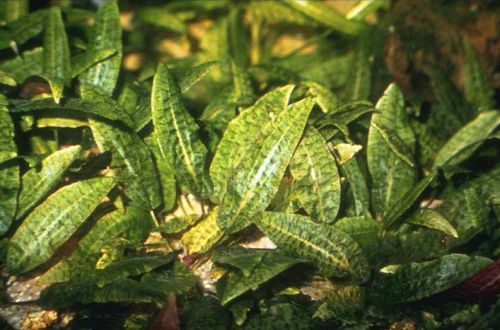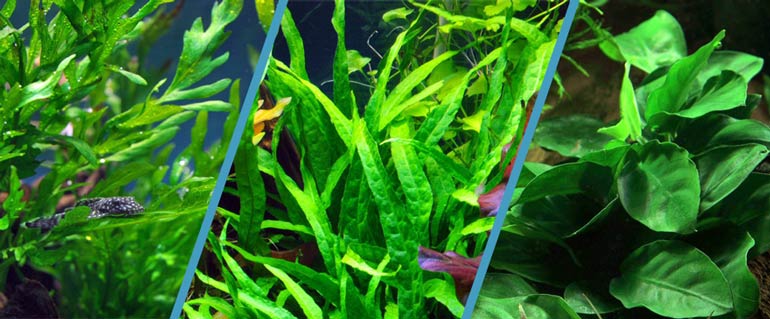
How to properly plant plants in an aquarium
Before proceeding with planting plants in an aquarium, in some cases, some preparatory work will be required related to pruning the roots, dividing the bushes, washing. This is discussed in detail in a separate article.
Depending on the characteristics of the growth of a particular group of plants, the methods of planting them will differ. Most of the examples demonstrate the “dry method” in which there is no water in the aquarium and the plants are placed in moist soil.
Contents
Planting out of soil plants / ferns
Plants that grow on driftwood and rocks
 Examples of plants that can grow outside the soil, attaching to the rough surface of stones, snags
Examples of plants that can grow outside the soil, attaching to the rough surface of stones, snags
This group includes species such as Anubias, Bucephalandra and some others, as well as most ferns. They do not need soil and grow on the surface of snags, stones and other decorative elements.
Three ways to fix the plant on a snag
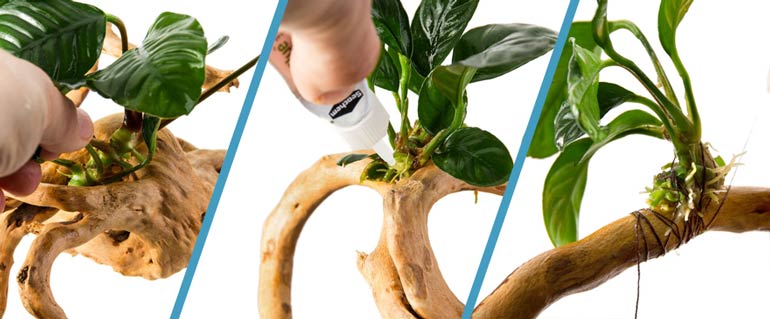 Attaching the anubias plant to the surface of the driftwood in three different ways: placing the sprout in a crevice, fixing it with glue and fishing line
Attaching the anubias plant to the surface of the driftwood in three different ways: placing the sprout in a crevice, fixing it with glue and fishing line
It is enough to place them in the gaps in the decor, gluing them with special vegetable glue if necessary, or carefully fix them with a fishing line.
Planting stem plants
Examples of stem plants for an aquarium
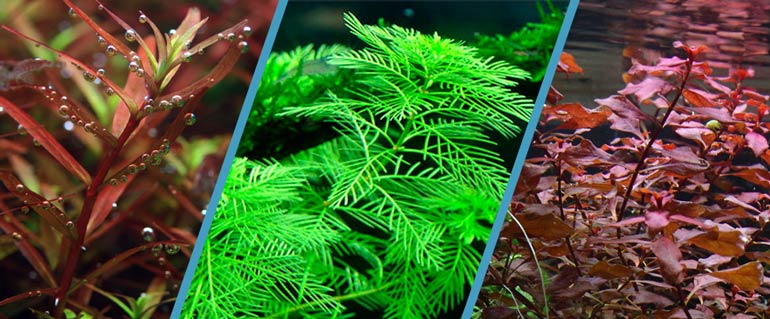 Examples of stem aquarium plants, a characteristic structural feature of which is the main erect stem with leaves receding on the sides
Examples of stem aquarium plants, a characteristic structural feature of which is the main erect stem with leaves receding on the sides
The classic method is used. The root part is placed in the prepared hole and filled up from above. If the sprout is small, then with the help of tweezers it is immersed in the substrate.
Planting a stem plant in an aquarium
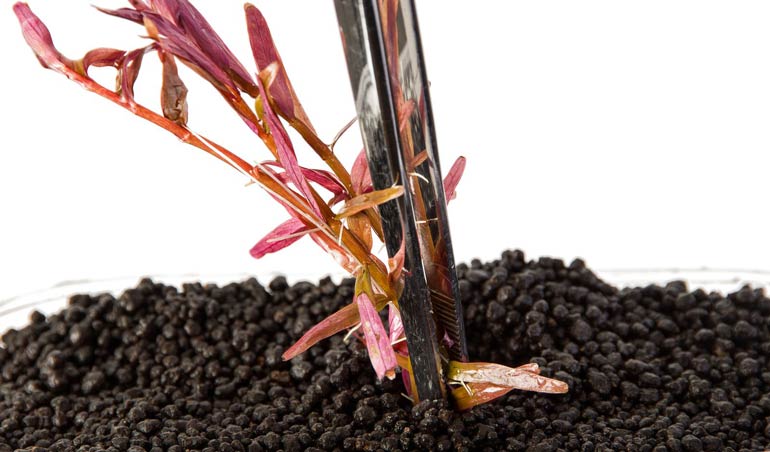 Diving into the soil of a small sprout of a stem plant with tweezers
Diving into the soil of a small sprout of a stem plant with tweezers
When planting stem plants with small roots, it is advisable to place them in the substrate at an angle. The extra weight of the soil will reduce the chance of floating.
Planting rosette plants
Planting rosette plants in the aquarium
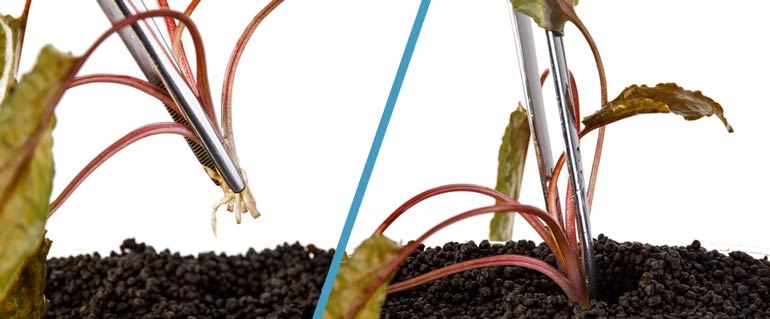 Planting rosette plants in the ground with tweezers
Planting rosette plants in the ground with tweezers
The classic method of planting is also used. Depending on the size of the plant, it is placed with its roots in an already prepared hole / recess and filled in, or immersed in the ground with tweezers.
Planting “carpet” plants
Carpet plants in the aquarium
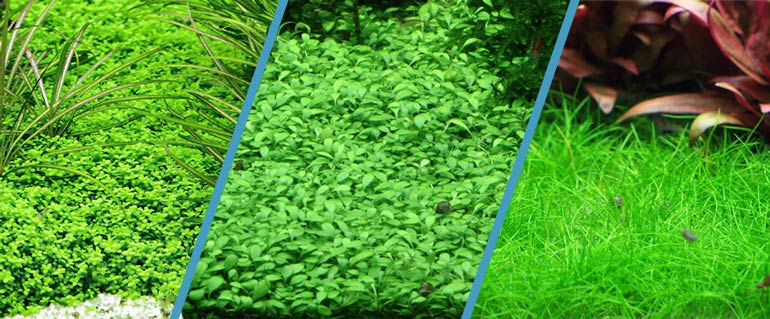 Examples of carpet plants that, when growing, form a dense undersized cover
Examples of carpet plants that, when growing, form a dense undersized cover
This group includes plants that, when growing, form a kind of lawn or green “carpet” at the bottom. The most famous species are Hemianthus Cuba and Glossostigma povoynichkovaya.
Planting carpet plants in the aquarium
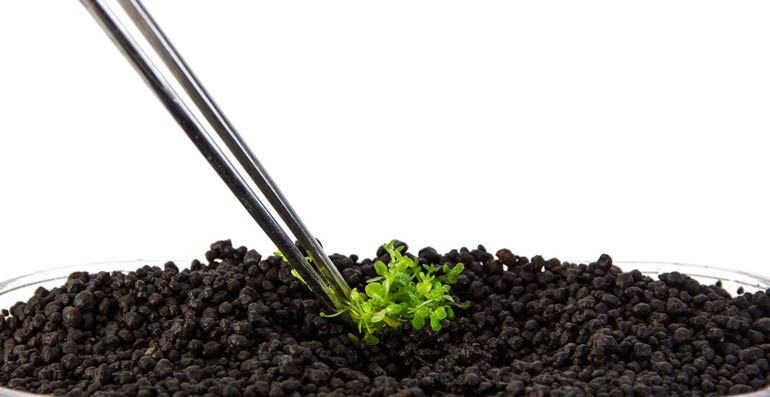 Planting carpet plants in the ground with tweezers
Planting carpet plants in the ground with tweezers
They are supplied in clusters that need to be divided into small fragments / parts. Each piece is planted in the ground at a distance of 3-4 cm from each other. Over time, they will cover the entire surface.
planting mosses
java moss
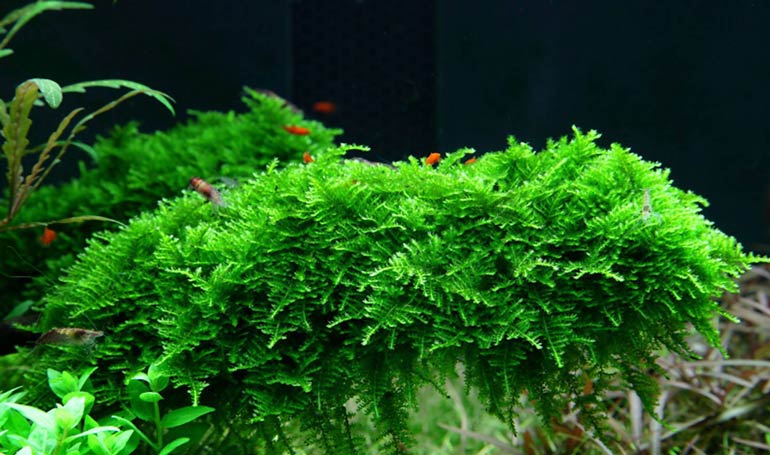 Overgrown Javanese moss among aquarium decoration
Overgrown Javanese moss among aquarium decoration
Like ferns, mosses should not be planted directly in the ground. The ideal environment for them is any surface. With the help of special vegetable glue, small bundles and clusters can be fixed on any objects.
Attaching Java moss to driftwood
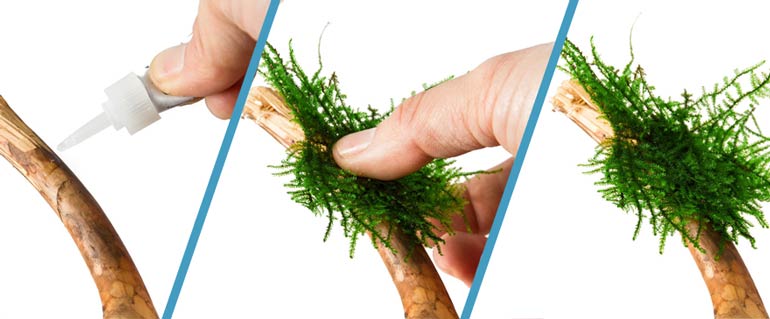 Three stages of fixing moss on decorative elements in the aquarium using special glue
Three stages of fixing moss on decorative elements in the aquarium using special glue
It is convenient to fix large thickets with fishing line or any other nylon thread.
Securing Java moss with fishing line
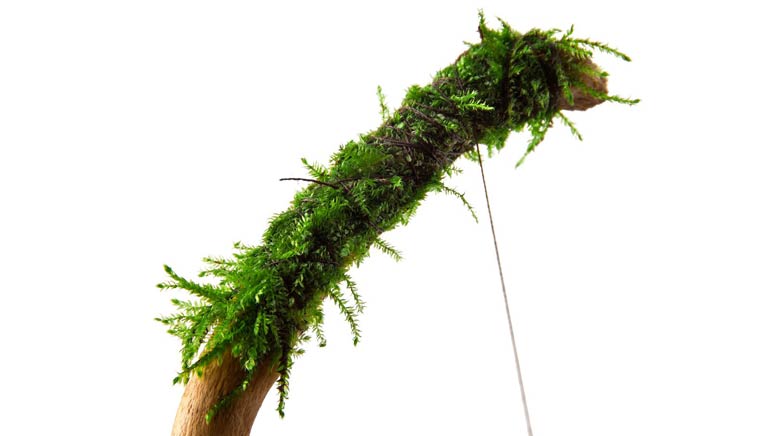 Attaching moss to driftwood with fishing line or nylon thread
Attaching moss to driftwood with fishing line or nylon thread
Mosses can also be placed in gaps in decorative elements.
Planting floating plants
Planting floating plants in the aquarium
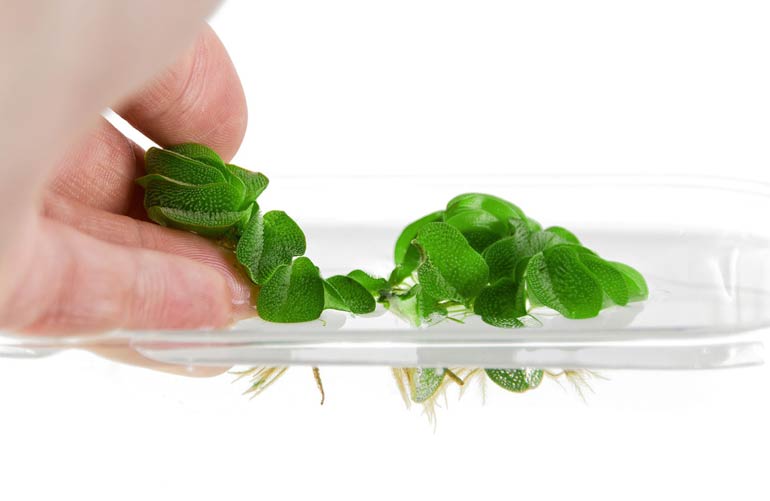 Placement of floating plants on the water surface of the aquarium
Placement of floating plants on the water surface of the aquarium
With them, everything is simple. There is no planting as such. Floating plants are simply located on the surface of the water.
Riccia floating
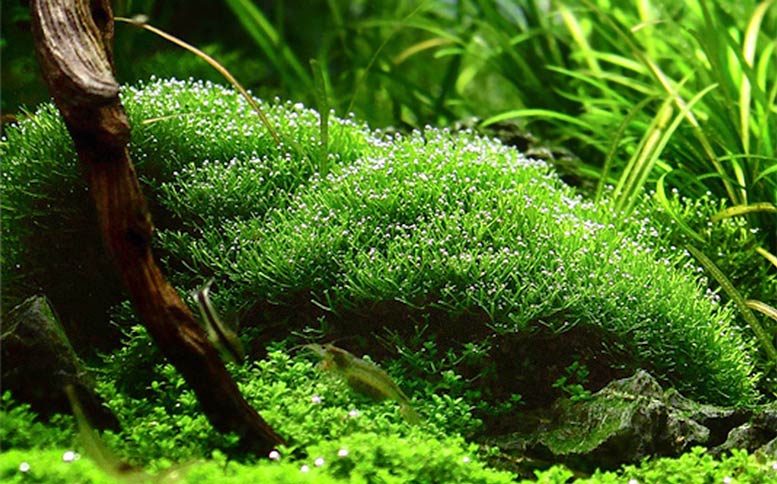 Floating plant Riccia, used as a bottom plant attached to a decorative element
Floating plant Riccia, used as a bottom plant attached to a decorative element
However, there are exceptions, such as riccia, which is a floating moss, but is often used as a soil plant or fixed on snags, stones and other decorative elements.
Planting bulbous/tuberous plants
Planting tuberous plants in the aquarium
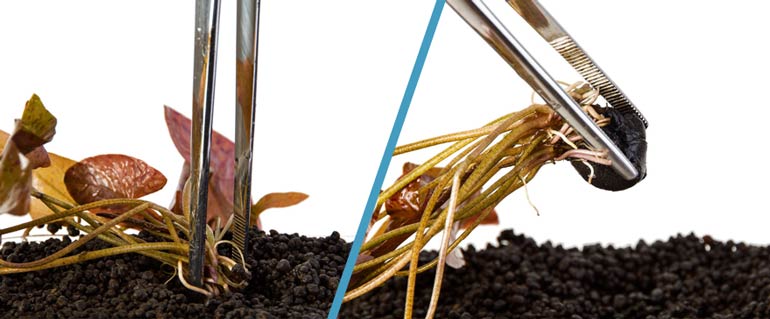 Planting tuberous / bulbous plants in moist soil with tweezers
Planting tuberous / bulbous plants in moist soil with tweezers
The basis of these plants is a tuber or bulb. Under no circumstances should they be damaged. Even if all the leaves are destroyed, the tuber will later give new shoots. The bulb is gently pressed into the moist soil, and if it is large, then it is placed in a pre-prepared hole and covered so that only leaves remain on the surface.




